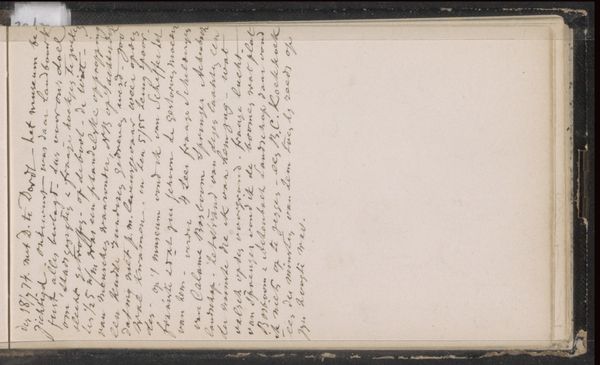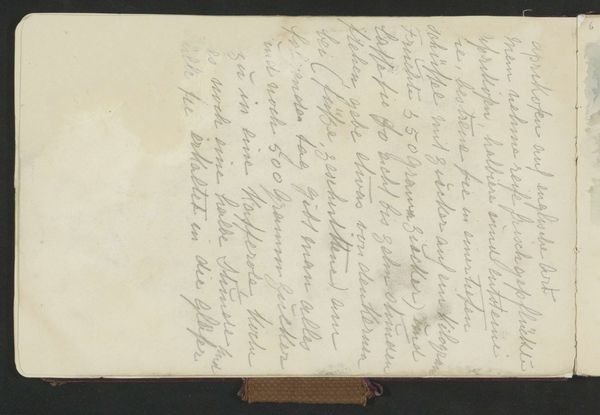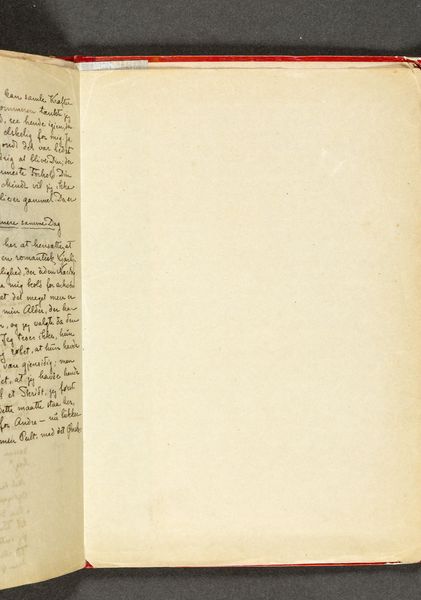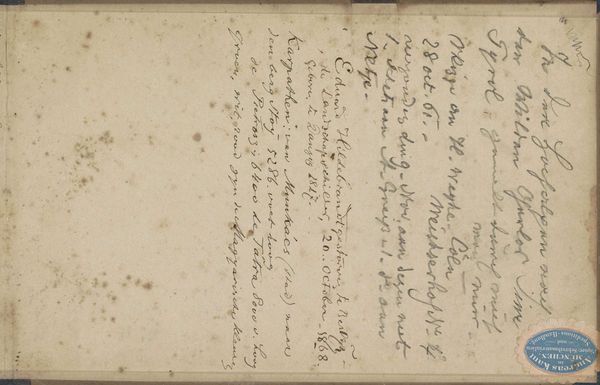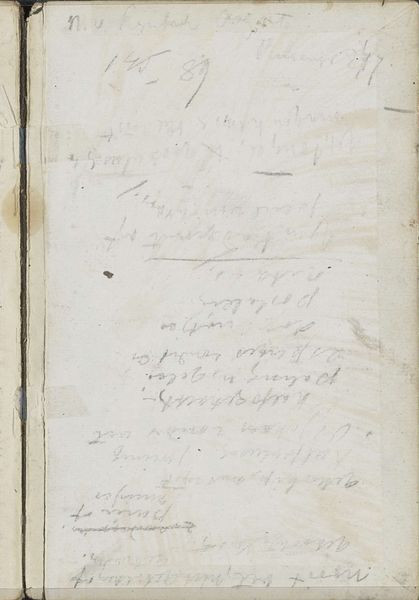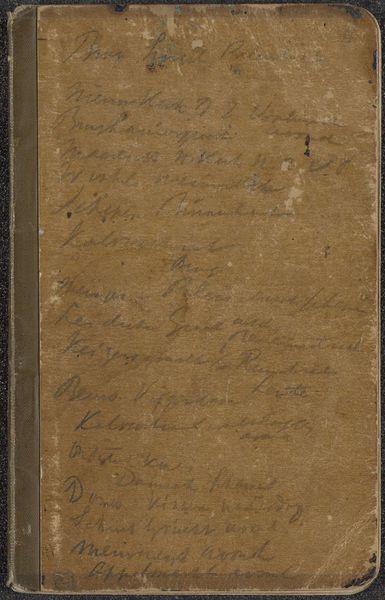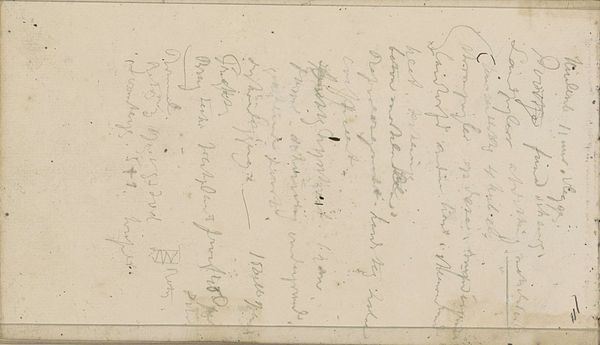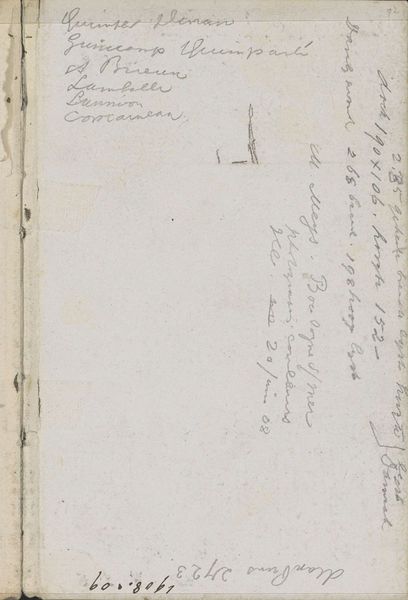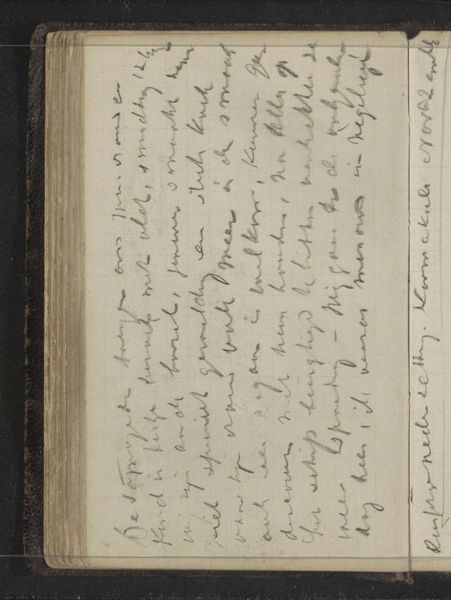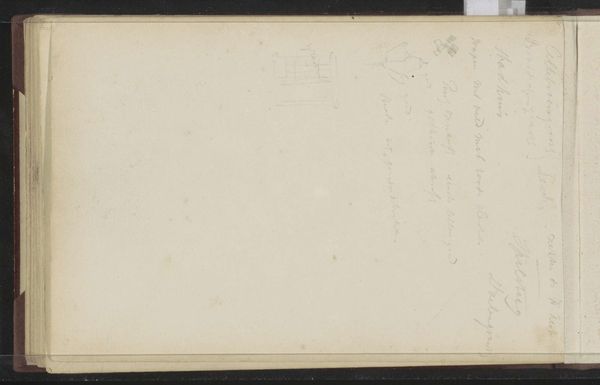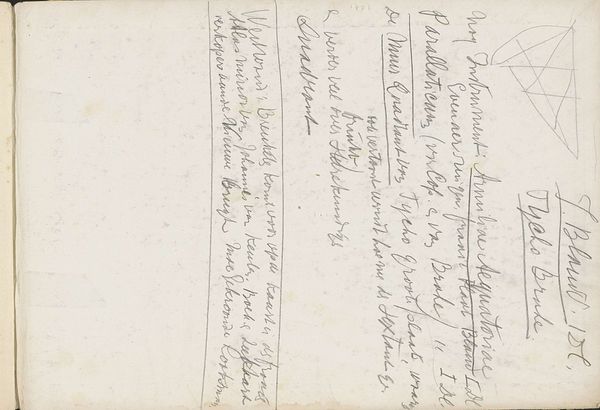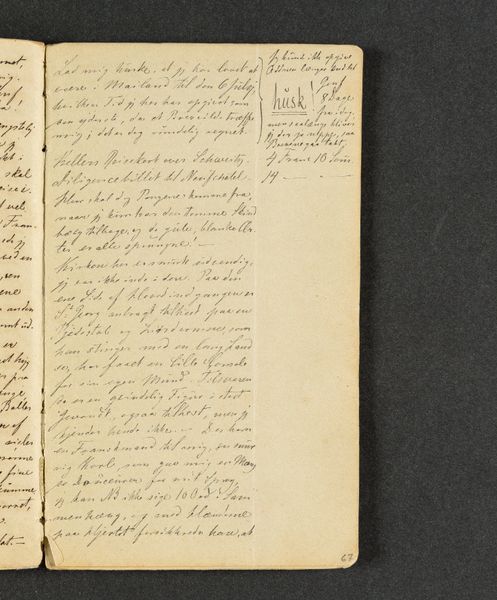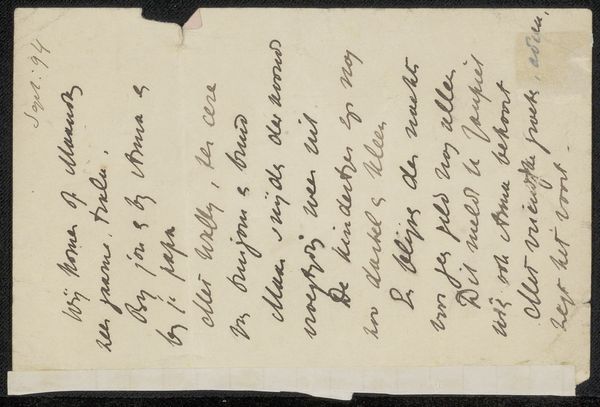
drawing, mixed-media, paper, ink
#
drawing
#
aged paper
#
mixed-media
#
hand-lettering
#
narrative-art
#
hand drawn type
#
landscape
#
hand lettering
#
paper
#
personal sketchbook
#
ink
#
hand-drawn typeface
#
fading type
#
stylized text
#
handwritten font
#
small lettering
Copyright: Rijks Museum: Open Domain
Editor: This mixed-media drawing on paper, “Notities,” by Antoon Derkinderen, dates from 1892 to 1901. It looks like a page from a sketchbook. There’s this faded, handwritten script and what looks like a faint landscape sketch. What’s the story behind a piece like this? Curator: This isn't just a random sketch; it's a window into the artist’s process and the cultural currents swirling around them. In the late 19th century, there was this fascination with spiritual and philosophical exploration. These "notes" might be related to his artistic or intellectual pursuits. Consider how the rise of Symbolism at the time moved artists towards expressing subjective emotions and ideas, rather than depicting the external world realistically. Editor: So, this wasn't necessarily intended for public consumption then? Was the idea of the "private" sketchbook significant at that time? Curator: Absolutely. The sketchbook emerged as a space for experimentation, a testing ground for ideas. The rise of the individual, spurred by social and political changes of the 19th century, certainly informed how artists viewed their personal artistic journeys. We see artists begin to document private thoughts, anxieties and beliefs within a readily accessible medium like the paper surface, to be reviewed in due time. Editor: It's amazing to think about the social context influencing something so seemingly intimate as an artist's sketchbook. Curator: Indeed. Art isn't created in a vacuum. Understanding the prevailing ideas and institutions of the time gives us deeper insights into seemingly simple artworks such as these preliminary notations. Editor: That makes me appreciate it even more, knowing that even something so personal is shaped by the world around it. Curator: Precisely! And hopefully encourages us to think more about the public life of art.
Comments
No comments
Be the first to comment and join the conversation on the ultimate creative platform.
